This week, we received data on dwelling approvals from the Australian Bureau of Statistics (ABS), which showed that the Albanese government’s target of building 1.2 million homes over five years (i.e., 240,000 dwellings a year) is falling badly behind.
In the first 14 months of the National Housing Accord, 218,306 dwellings were approved, 61,694 (22%) fewer than the target of 280,000 dwellings.
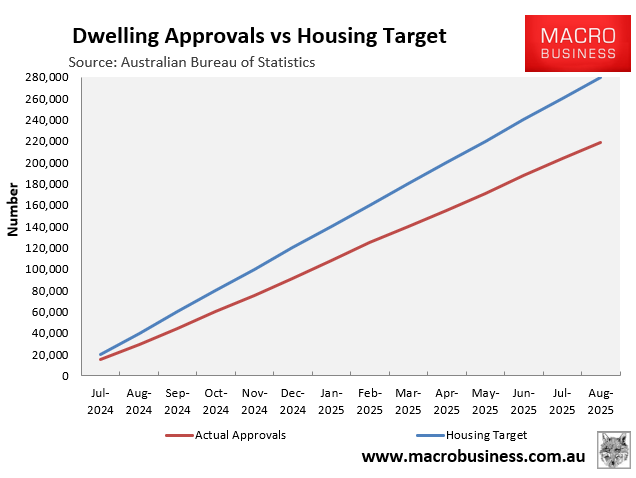
However, dwelling approvals have outpaced completions by 5% over the past decade, meaning the National Housing Accord’s target is further out of reach.
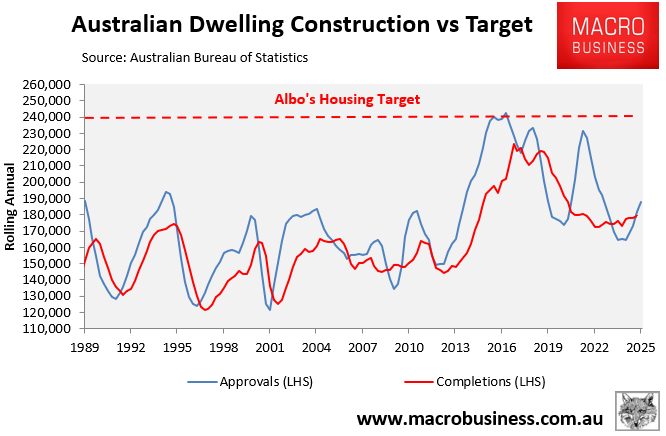
When asked this week about the government’s housing target, Reserve Bank of Australia (RBA) governor Michele Bullock cast doubt on whether supply would meaningfully improve in the next two years.
“The problem in the housing market is a structural deficit of supply”, Bullock said. “And governments now get that, and you are seeing some action on that, but it’s going to be slow to work its way through. I’m not confident it’s going to make any impact in the next two years”.
Of course, Bullock’s view was echoed by the latest report from the National Housing Supply and Affordability Council (NHSAC), which forecast that the government would fall short of its 1.2 million housing target by 262,000 homes, or 22%:
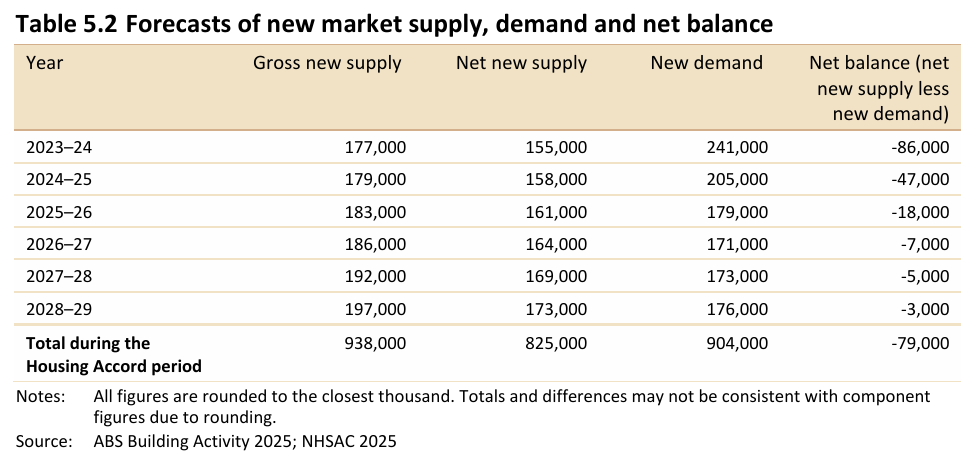
As a result, Australia’s cumulative housing shortage, currently estimated at between 200,000 and 300,000 homes, will rise by 79,000 over the five-year Housing Accord term.
Even so, Prime Minister Anthony Albanese on Wednesday talked up the government’s housing achievements, boasting that 500,000 homes have been constructed since Labor came to office in June 2022.
“On our watch, more than 500,000 additional dwellings have been built”, Albanese proclaimed. “We’ve seen an increase in construction, 3% year on year”.
Of course, Albo conveniently left out the fact that a record 1,227,800 net overseas migrants landed in Australia during Labor’s first 33 months in office:
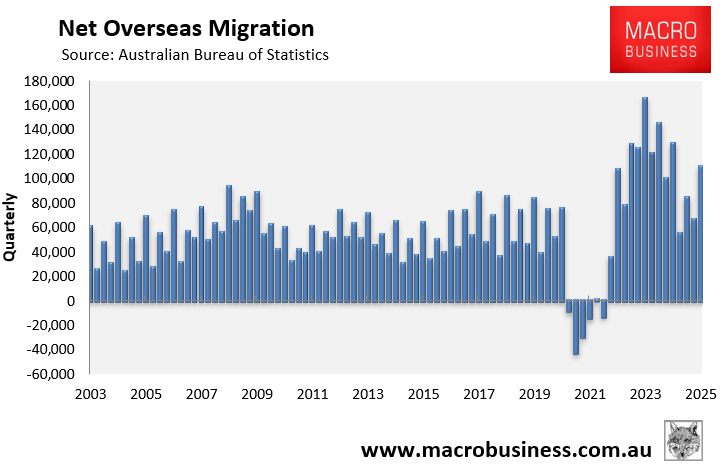
Nor did Albanese mention that Australia’s population surged by a record 1,518,200 over Labor’s first 33 months in office:
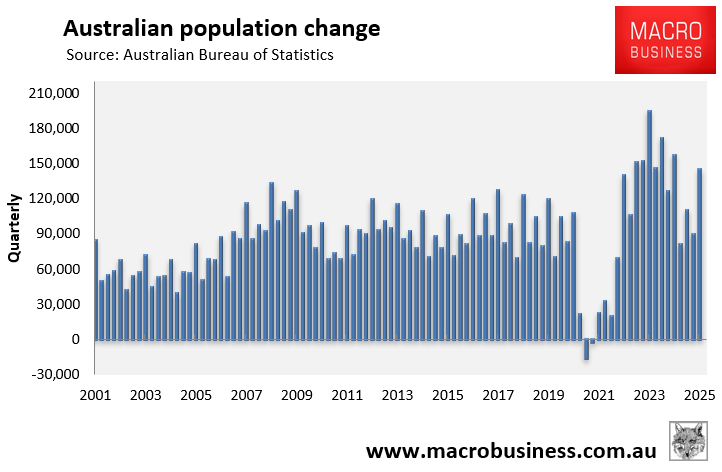
The reality is that with net overseas migration seemingly rebounding, based on net permanent and long-term arrival flows, and housing supply remaining bottlenecked, Australia’s housing shortage is worsening every day.
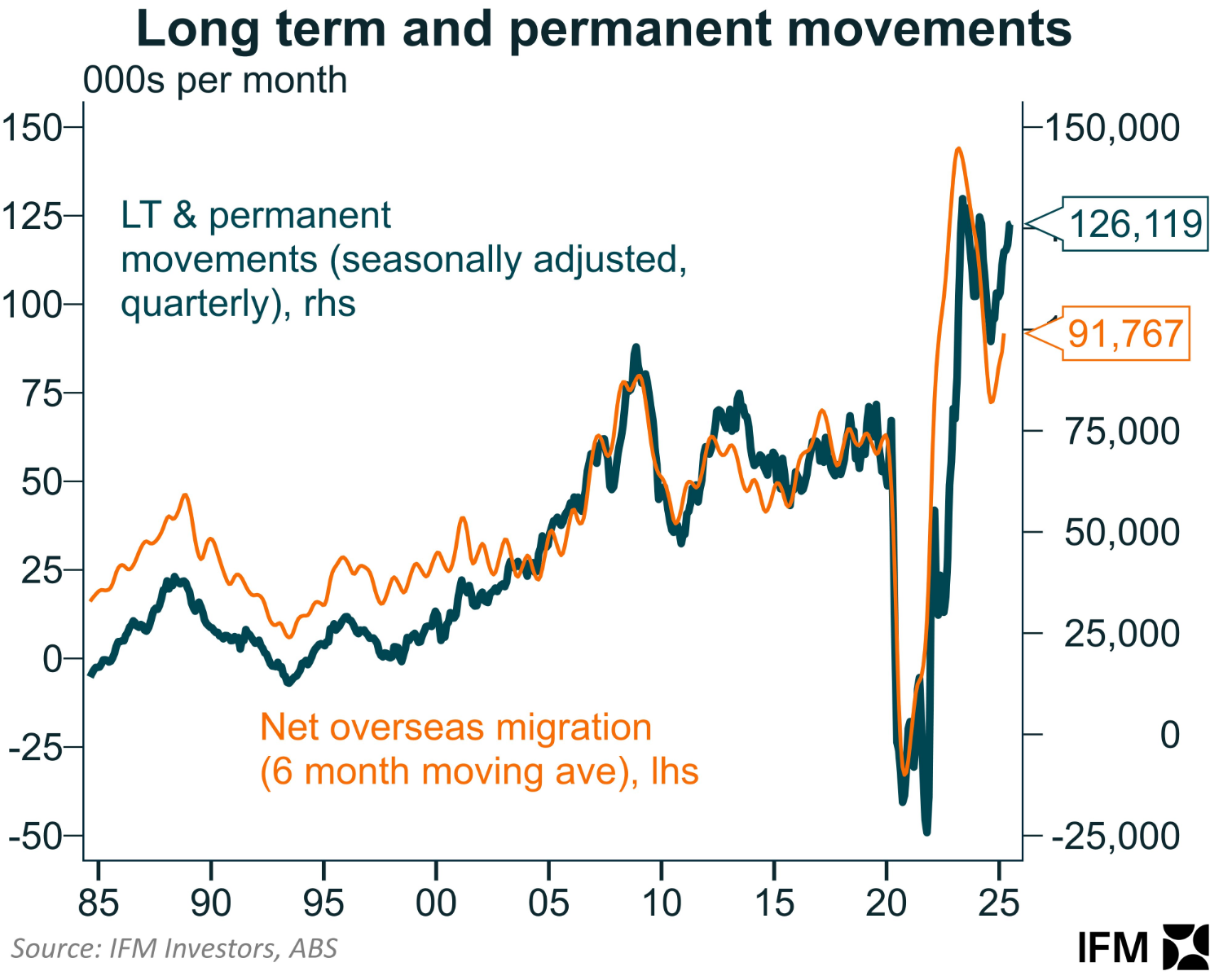
The only realistic solution to Australia’s housing shortage is to reduce demand by implementing a smaller and better-targeted migration system focused on the skills we actually need (e.g., tradespeople).
NHSAC’s sensitivity analysis showed that if the nation’s population rose by just 15% less than forecast over the next five years, the projected 79,000 shortfall in housing would become a 40,000 surplus:
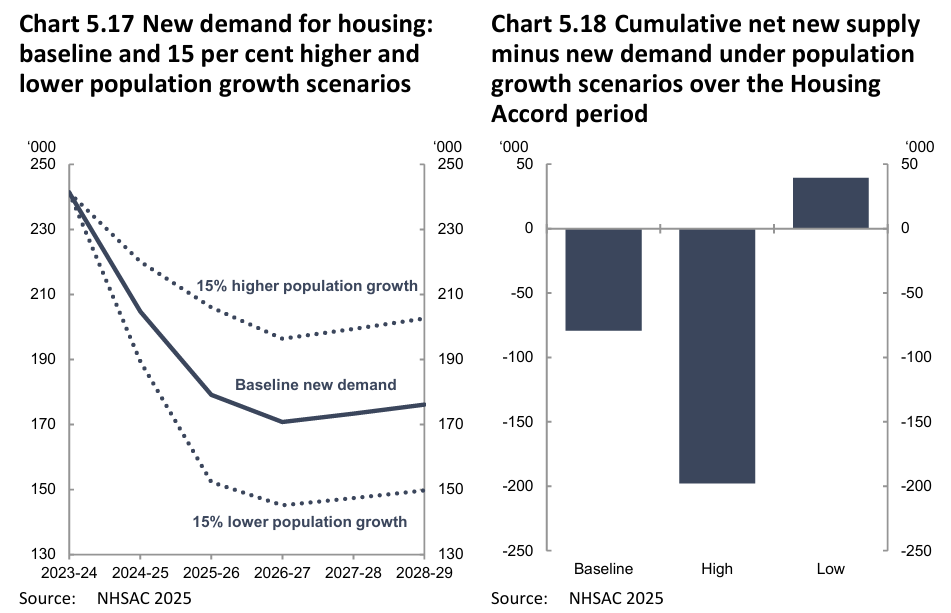
Australia is facing a persistent housing shortage because its population has expanded faster than almost any other advanced country this century.
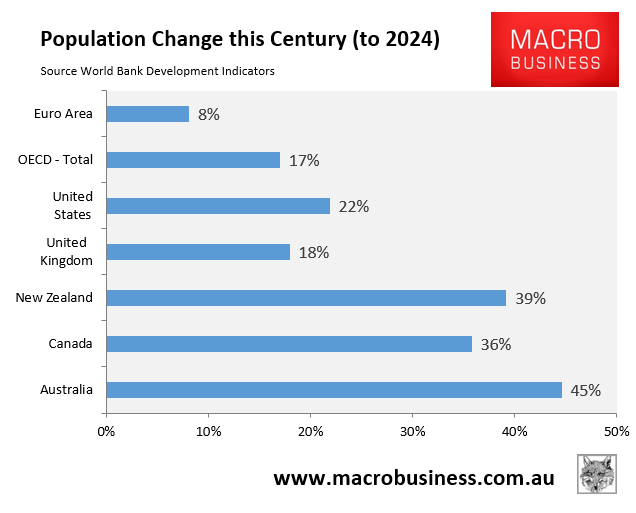
Thus, ensuring that population demand matches supply is critical to resolving the housing crisis. Otherwise, the housing shortage and rental crisis will worsen.

